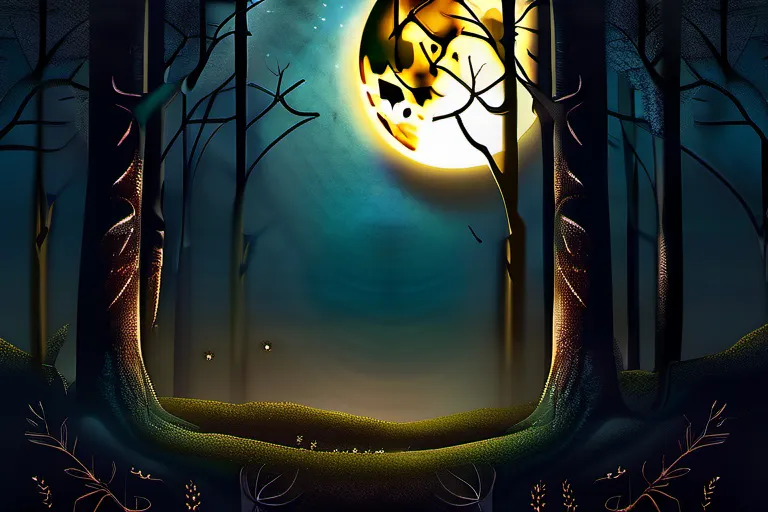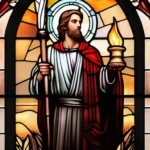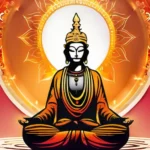Explore the history, beliefs, and practices of paganism in this detailed guide.
Paganism is an umbrella term for a wide range of religious beliefs that are not part of the Abrahamic traditions. In this article, we will delve into the fascinating world of paganism, exploring its origins, key beliefs, and practices. From polytheism to animism, we’ll cover it all.
The Origins of Paganism
Imagine a world where the lines between nature, humanity, and deities were blurred. Paganism, one of the most ancient spiritual practices, has its roots deeply embedded in such a world. How did this complex web of beliefs emerge? Let’s delve into the origins of paganism, tracing its development from the earliest civilizations to the diverse forms it takes today.
Did you know that Paganism, often associated with ancient religions and nature worship, has its beginnings in prehistoric times? The very first cultures, like the Neolithic communities, revered the earth itself as a deity. These early humans saw the cycle of life—birth, death, and rebirth—in every aspect of nature. They worshipped the sun, moon, stars, rivers, and mountains, recognizing that all things were interconnected in a grand cosmic dance.
As we move through history, we see the emergence of civilizations like Ancient Greece and Rome, where Polytheism flourished. In these cultures, gods and goddesses were personifications of natural forces or abstract concepts, much like characters in an epic tale. The Greeks, for instance, had a rich pantheon of deities, each with distinct roles and attributes. What if the stories we read as children were not just tales but representations of complex beliefs and practices?
The spread of these beliefs across different regions brought about a fascinating fusion of cultures. For example, in Europe, Paganism was shaped by Germanic, Celtic, and Slavic traditions. These diverse groups shared common themes such as reverence for the land and seasonal festivals, but each had unique deities and rituals. How might your community’s celebrations have evolved if it held on to these ancient practices?
From the cradle of civilization in Mesopotamia to the vibrant cultures of Africa and Asia, Paganism reflects a universal human quest for understanding our place in the world. It’s as if the spirits themselves whispered through the ages, leaving us clues about our shared heritage.
Polytheism: The Worship of Multiple Deities
Imagine stepping into a world where the divine is not just one, but many—Polytheism, the worship of multiple deities, forms a vibrant tapestry in the realm of Paganism. Just as a garden thrives with diverse flowers, each deity has its own unique role and influence within the pantheon. These gods and goddesses often reflect various aspects of nature or human experience, making their worship deeply interconnected with daily life.
In ancient times, polytheistic beliefs were integral to many societies. How did these practices evolve? In mythologies, deities like Zeus in Greek religion or Odin in Norse tradition represented not just a singular god, but a complex network of entities overseeing different realms and responsibilities. This multiplicity in divinity suggests a rich, multifaceted understanding of the world around us.
The rituals associated with polytheism are often a blend of ceremony and practicality. Think about it: offerings to gods could range from libations of wine or milk to more elaborate sacrifices, all designed to maintain a harmonious relationship between humans and their divine counterparts. These practices were not merely superstitions but essential for community cohesion and personal well-being.
Today, modern Pagans continue to embrace polytheism in diverse ways. Whether through rituals, festivals, or simply honoring deities in daily life, the practice remains a living tradition that connects the past with the present. As we navigate our spiritual journeys, pondering the many faces of divinity can offer profound insights into the nature of existence itself.
So, as you delve deeper into the world of Paganism and its myriad practices, consider the richness of polytheism. Each deity holds a piece of the puzzle, reflecting different facets of the divine in our lives. In embracing these many gods and goddesses, we find a broader understanding of what it means to be human—and perhaps even closer to the essence of the world around us.
Animism: The Spiritual Connection to Nature
Imagine a world where every stone, tree, and bird carries its own spirit, a vibrant tapestry woven from threads of nature’s essence. This worldview is at the heart of animism, one of the oldest belief systems in pagan religions. How can something as simple as a rock or leaf hold such profound spiritual significance?
In animistic practices, everything is imbued with life and consciousness. The forest isn’t just a collection of trees; it’s a living entity, a complex network of spirits interacting and influencing each other. When you walk through the woods, every step could be a respectful acknowledgment of these unseen spirits. Is there not a sense of reverence when you touch a tree or watch a squirrel dart across your path?
Animism isn’t just about the physical world; it’s also deeply connected to the spiritual realm. Are we truly alone in this vast universe, or are we surrounded by unseen allies and adversaries? Animists believe that spirits can guide us, protect us, and even punish us if we don’t live in harmony with nature. This belief shapes their daily lives, influencing decisions on where to build a home or how to plant crops.
The practice of animism often involves rituals aimed at appeasing these spirits. These rituals might include offerings of food, prayers, or songs that honor the natural world and its inhabitants. Can you imagine offering a flower as an act of gratitude to the earth? Such acts are not merely symbolic; they are deeply rooted in respect for the interconnectedness of all things.
In essence, animism is about living in harmony with nature. It’s like seeing the world through a lens that recognizes every element’s potential spirit. Can you see yourself as part of this intricate web of life? By understanding and respecting these spirits, pagans seek to maintain balance and ensure that their actions have positive outcomes for all beings.
This perspective on the spiritual world can be both humbling and empowering. It challenges us to rethink our relationship with nature and encourages a more mindful approach to our environment. As you explore the practices of animism, consider how these beliefs might inform your own connection to the natural world.
Pagan Practices: Rituals and Celebrations
Pagan practices, like a vibrant tapestry woven through history and nature, are rich with ritual and celebration. These rituals serve as a profound connection between the earthly realm and the spiritual world, often marking the passage of time in a way that feels both ancient and timeless.
Imagine a circle, not just any circle but one drawn on the ground with stones or leaves, representing the sacred space where rituals unfold. This circle is much more than a simple drawing; it symbolizes the wheel of life, connecting past, present, and future. In this space, participants gather to perform various rituals, each designed to honor specific aspects of nature or deities.
The Sabbats, those magical moments when the seasons change, are perhaps the most well-known pagan celebrations. Think about it: what is a new year’s celebration if not a moment of reflection and renewal? These seasonal festivals mark the birth, growth, death, and rebirth of both the earth and its inhabitants. Each Sabbat brings its own unique rituals and practices, such as bonfires for Beltane to welcome spring or harvest feasts for Lammas.
Then there are the Esbats, lunar celebrations that honor the moon’s phases. These can be more intimate affairs, focusing on spells, divination, and personal growth. The full moon is often seen as a time of heightened magic and clarity, while the new moon represents beginnings and setting intentions.
Through these rituals, pagans find not only a way to connect with nature but also a deep sense of community and purpose. Each practice is a poetic dance, moving gracefully between the physical world and the spiritual realm. It’s in this space that beliefs come alive, manifesting in tangible magic that enriches daily life.
As you step into this circle, imagine yourself as part of a vast web, each thread representing a different ritual or celebration. Together, these threads form a vibrant tapestry, telling the story of humanity’s eternal quest for connection and meaning. In the heart of every pagan practice lies a simple truth: we are all connected to something greater than ourselves, and our rituals are but a reflection of that profound bond.
Modern Paganism: A Resurgence of Ancient Beliefs
Imagine stepping back through time, where ancient civilizations thrived and worshipped nature in its purest form. Now, let’s fast-forward to today and explore how these ancient beliefs have made a significant comeback. The modern resurgence of paganism is not just a return to roots but a vibrant reimagining of old practices for the contemporary world.
Why do so many people find themselves drawn to this path? It’s as if, in our hurried and often disconnected lives, there’s an innate human longing to connect with something greater, something that speaks directly to our hearts. Is it not true that we seek meaning beyond technology and material goods?
One might wonder how these ancient practices have managed to survive the test of time. The answer lies in their adaptability and the deep-seated human need for spiritual connection. Modern paganism is a tapestry woven with threads from various traditions, including Wicca, Druidry, Heathenry, and many more. Each strand adds its unique color and texture, creating a rich and diverse fabric.
But how do these ancient beliefs adapt to the modern world? Consider the concept of sacred space. In times past, sacred spaces were often grand temples or natural sanctuaries. Today, we find them in our homes, backyards, or local parks. The practices may change—say goodbye to sacrificial lambs and hello to digital altars—but the essence remains: a deep respect for nature and its elements.
Moreover, modern paganism is not just about personal spiritual growth; it’s also about community building. Gatherings, covens, and festivals bring people together in celebration of life’s cycles, from the changing seasons to significant personal milestones. These events offer a sense of belonging and shared purpose that can be hard to find in today’s often isolating digital age.
As we move forward, it is clear that paganism will continue to evolve. Just as nature adapts with each passing season, so too do these ancient practices transform to meet the needs of their adherents. The future holds boundless potential for growth and innovation in this dynamic spiritual movement.
The Future of Paganism: A Look Ahead
The future of Paganism looms like the dawn after a long, dark night. Can this ancient path truly reclaim its place in contemporary society? Will it evolve into something unrecognizable from its roots? Or will it remain a beacon for those seeking spiritual solace and connection with nature?
As we look ahead, one thing is certain: Paganism is not static. It has always been a dynamic tradition that adapts to new contexts. Just as the sacred grove once stood in the heart of ancient communities, so too might new forms of worship and ritual emerge in urban settings or virtual spaces.
Technological advancements could be a catalyst for change. Imagine immersive digital rituals where participants from around the world gather to celebrate seasonal festivals or honor deities online. This could make Paganism more accessible than ever before, breaking down geographical barriers that have long separated practitioners.
On the other hand, there’s a risk of dilution. As Paganism gains mainstream attention, it might lose its unique identity. How can we preserve the core values of respect for nature and community while still engaging with broader audiences? The challenge lies in finding a balance between tradition and innovation.
Moreover, as society grapples with environmental crises, Paganism may find renewed relevance. Its holistic approach to eco-spirituality could become a powerful force for change, encouraging more people to live harmoniously with the planet. Will this lead to a surge in pagan practices among those seeking sustainable lifestyles?
The future of Paganism is both exciting and uncertain. It stands at a crossroads where tradition meets transformation. As we move forward, one question persists: How will Paganism continue to inspire and guide the seekers of tomorrow? The answers might surprise us all.
Conclusion
 By the end of this guide, you’ll have a solid understanding of what paganism is, its various branches, and how it continues to thrive in modern times. Embrace the wisdom and beauty of these ancient beliefs!
By the end of this guide, you’ll have a solid understanding of what paganism is, its various branches, and how it continues to thrive in modern times. Embrace the wisdom and beauty of these ancient beliefs!











